January 5, 2025 · 12 min read
How to Calculate ROI on Reduced Meeting Time with AI-Powered Agendas

Shaimaa Badawi
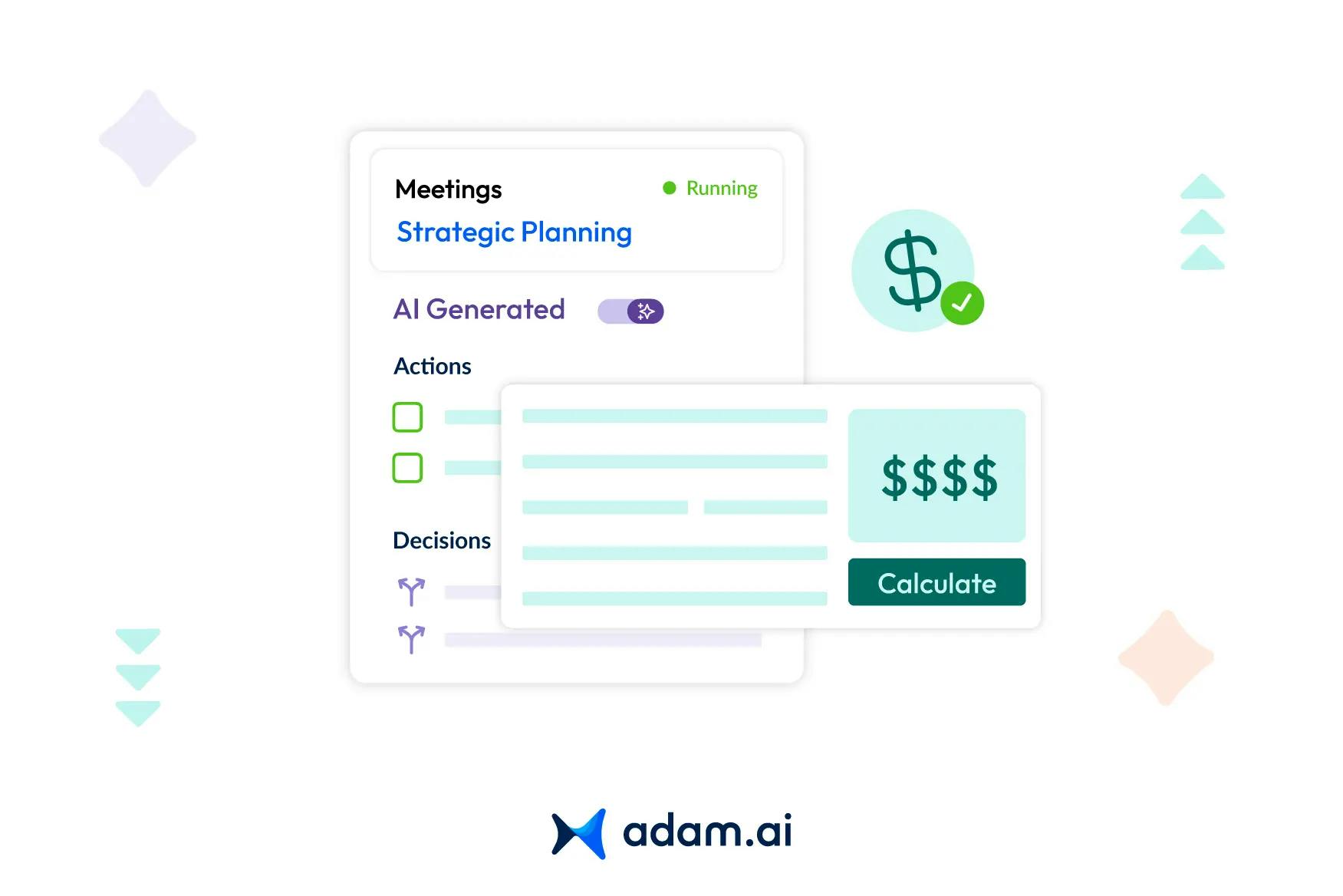
Meetings can either propel an organization forward or drain its time and resources. Imagine the cost savings and productivity boosts your enterprise could achieve simply by reducing meeting time. This article explores how AI-powered agendas are transforming meeting management, helping enterprises in industries like healthcare, finance, IT, and education streamline operations and calculate the return on investment from shorter, more efficient meetings.
What is ROI, and why does it matter for enterprise meetings?
ROI, or return on investment, is a key financial metric that measures the profitability of an investment relative to its cost. For enterprise meetings, ROI evaluates whether the time, resources, and costs spent on meetings generate meaningful outcomes, such as improved decision-making, enhanced collaboration, or financial gains.
ROI matters because meetings are significant investments of time and money. Enterprises often allocate substantial resources to plan, conduct, and follow up on meetings. By calculating ROI, organizations can assess whether these efforts align with business objectives and drive measurable benefits, such as increased productivity, faster project delivery, and cost savings. It also helps identify inefficiencies, optimize meeting practices, and justify investments in tools like AI-powered agendas to enhance outcomes.
How does reducing meeting time impact organizational productivity and costs?
Reducing meeting time directly enhances organizational productivity and lowers costs by addressing key inefficiencies in traditional meeting practices. When meetings are shorter and more focused, employees have more time to dedicate to deep work, project execution, and strategic tasks, leading to higher output and better quality results.
From a cost perspective, shorter meetings reduce the opportunity cost of employee time. Time saved translates into significant financial gains, especially in enterprises with high hourly rates for managers and executives.
Additionally, minimizing meeting duration often lowers associated overhead costs, such as video conferencing fees, document preparation, and follow-ups. Ultimately, reducing meeting time streamlines workflows, promotes a culture of efficiency, and ensures that meetings are purposeful and results-driven, maximizing ROI for the organization.
What are AI-powered agendas, and how do they streamline meeting management?
AI-powered agendas leverage artificial intelligence to create, organize, and manage meeting agendas more efficiently. These tools analyze meeting details, past discussions, and organizational priorities to generate structured, actionable agendas tailored to the specific needs of a meeting.
Key features of AI-powered agendas
- Automated agenda creation: AI suggests topics, time allocations, and speakers based on historical data and the meeting's goals.
- Real-time adjustments: During the meeting, AI can adapt the agenda to reflect changes or unexpected developments.
- Seamless integration: AI integrates with calendars, task management platforms, and communication tools, centralizing meeting-related activities.
- Follow-up facilitation: It generates post-meeting summaries, highlights action items, and tracks progress, ensuring accountability.
By automating repetitive tasks and providing data-driven insights, AI-powered agendas save time, reduce errors, and ensure meetings are more productive and outcome-focused. This streamlining transforms meetings from routine obligations into strategic tools for achieving business goals.
How can AI-powered agendas help calculate ROI for your meetings?
AI-powered agendas help calculate ROI for meetings by providing data-driven insights and tangible metrics that quantify the value of reduced meeting time and improved productivity. They automate processes that track time savings, action completion, and decision outcomes, giving enterprises a clearer picture of their meeting efficiency.
How AI-powered agendas assist in ROI calculation
- Time tracking: AI tools record time spent in meetings versus the time saved through efficient agenda management, directly correlating with reduced labor costs.
- Action item tracking: They monitor the completion rate of tasks assigned during meetings, linking them to project milestones and financial gains.
- Cost reduction analysis: AI calculates savings from reduced meeting durations, minimized follow-ups, and lower resource use, such as printing or travel costs.
- Productivity measurement: By analyzing decision-making speed and collaboration effectiveness, AI quantifies how improved meetings impact organizational performance.
What steps should you follow to measure ROI on meeting time savings?
To measure ROI on meeting time savings, organizations need a systematic approach that combines data tracking, analysis, and calculation. Here are the key steps:
1. Define clear objectives
Start by identifying what you want to achieve through reduced meeting time. Objectives could include cutting down labor costs, increasing team efficiency, or improving the speed of decision-making. Align these objectives with broader organizational goals, like boosting project delivery timelines or enhancing employee productivity, to ensure measurable benefits.
2. Identify relevant metrics
Pinpoint the metrics that directly impact ROI. These can include the following:
- The total time saved per meeting across teams.
- Labor costs per hour for meeting participants.
- The reduction in the number of meetings required for decision-making.
- The percentage of tasks completed on time due to better meeting efficiency.
3. Collect baseline data
Before implementing any changes, gather data on your current meeting practices. Track metrics such as:
- Average duration of meetings.
- Frequency of meetings per team or department.
- Hourly costs for meeting attendees.
- Resources used, such as video conferencing platforms, printing, or travel.
4. Implement AI-powered agendas
Deploy an AI meeting management platform that automates agenda creation, tracks tasks, and monitors meeting efficiency. For example, AI can analyze past meeting patterns to optimize time allocations or suggest improvements based on attendee engagement. This technology ensures meetings are better planned and more aligned with business goals.
5. Monitor post-implementation changes
After adopting AI-powered agendas, track the same metrics you collected during the baseline phase. Look for changes such as the following:
- A decrease in average meeting duration.
- Reduced meeting frequency without sacrificing productivity.
- Higher task completion rates linked to improved meeting follow-ups.
Compare these changes with your baseline to assess the impact of your efforts.
6. Calculate ROI
Use the ROI formula: ROI = [(Net Benefit (Savings - Costs)) / Total Cost] × 100
Here, net benefits may include saved labor costs, reduced overhead, and faster project completion times.
For example, if the time saved by reducing meetings translates to $20,000 in labor cost reductions, and the cost of implementing AI-powered agendas is $5,000, the ROI would be
ROI = [($20,000 - $5,000) / $5,000] × 100 = 300%.
7. Review and optimize
Regularly review your metrics to ensure sustained improvements. Look for areas where further refinements can be made, such as enhancing agenda templates or using advanced AI features. Continuously optimizing your meeting processes will help you maximize ROI over time.
What are the tangible and intangible benefits of AI-powered agendas?
AI-powered agendas offer both tangible and intangible benefits that significantly improve meeting management and organizational efficiency.
Tangible benefits
- Time savings: AI automates agenda creation, task tracking, and follow-ups, reducing the time spent on administrative tasks. This efficiency allows teams to focus on strategic activities.
- Cost reduction: Shorter, more efficient meetings lower labor costs and associated expenses, such as travel, printing, or video conferencing tools.
- Increased productivity: By ensuring meetings stay on track and are goal-oriented, AI-powered agendas help teams make decisions faster and execute tasks more effectively.
- Enhanced accountability: Action items are clearly assigned, tracked, and monitored, leading to higher task completion rates and fewer delays.
- Data-driven insights: AI tools provide analytics on meeting efficiency, participant engagement, and task progress, helping organizations identify and address inefficiencies.
Intangible benefits
- Improved collaboration: Well-structured agendas foster better communication and engagement among participants, ensuring everyone is aligned on objectives.
- Better decision-making: AI-generated summaries and insights ensure decisions are informed by accurate and relevant information.
- Employee satisfaction: Streamlined and purposeful meetings reduce frustration associated with unproductive or prolonged discussions, boosting morale and job satisfaction.
- Cultural shift: AI adoption signals a commitment to innovation and efficiency, fostering a forward-thinking organizational culture.
- Knowledge retention: AI tools maintain comprehensive records of meeting discussions, decisions, and action items, ensuring institutional knowledge is preserved and easily accessible.
What are the cost implications of traditional meetings versus AI-assisted meetings?
The cost implications of traditional meetings versus AI-assisted meetings highlight significant differences in efficiency and resource utilization, which directly impact an organization's budget and productivity.
Cost implications of traditional meetings
- High labor costs: Traditional meetings often involve lengthy discussions and redundant points, consuming significant employee time, especially for high-salary professionals like executives or managers.
- Administrative overhead: Preparing agendas, distributing materials, and tracking follow-ups manually requires substantial effort from administrative staff.
- Missed opportunities: Poorly structured meetings can lead to delayed decisions, missed deadlines, and lower overall productivity.
- Resource expenses: Traditional meetings may involve travel costs, printing of physical materials, or rental fees for venues and equipment.
- Follow-up inefficiencies: Without automated tracking, action items may be forgotten or delayed, leading to additional meetings and extended timelines.
Cost implications of AI-assisted meetings
- Reduced meeting time: AI streamlines agenda creation and keeps discussions focused, cutting meeting durations and associated labor costs.
- Lower administrative effort: Automating repetitive tasks like agenda preparation, minute-taking, and follow-ups saves time and reduces reliance on support staff.
- Better resource allocation: Efficient meetings free up employee time for higher-value tasks, boosting overall productivity and ROI.
- Fewer meeting iterations: AI tracks and records action items and decisions, minimizing the need for follow-up meetings and ensuring faster execution of tasks.
- Scalable cost efficiency: Once implemented, AI tools offer consistent cost savings across multiple teams or departments, maximizing the return on investment.
How can enterprises track and analyze ROI metrics effectively?
Enterprises can track and analyze ROI metrics effectively by adopting a structured approach that combines data collection, analysis, and ongoing monitoring. Here’s how:
1. Focus on high-impact metrics
Instead of tracking a broad range of data, prioritize metrics that directly reflect ROI for meetings, such as the ratio of actionable decisions made, task follow-through rates, or reduced project cycle times. These focus areas ensure your analysis is meaningful and relevant.
2. Integrate meeting data across platforms
Use AI-powered meeting tools that sync with existing enterprise platforms, like project management or CRM systems. This integration allows seamless tracking of how meeting outcomes impact overall business goals, such as sales conversions, project completions, or team KPIs.
3. Employ predictive analytics
Leverage AI to not only assess past performance but also predict future trends. For example, tools can forecast the potential ROI of reducing meeting durations further or improving agenda quality, helping enterprises make proactive decisions.
4. Create industry-specific benchmarks
Develop ROI benchmarks tailored to your industry. For example, a healthcare organization might track ROI in terms of faster patient case resolutions, while a tech enterprise might evaluate it based on reduced product launch times.
5. Engage stakeholders regularly
Involve key stakeholders in interpreting ROI metrics to ensure alignment with strategic goals. Present reports in a way that resonates with their priorities, like cost savings for finance teams or improved project timelines for operations managers.
6. Include intangible metrics in analysis
While ROI often focuses on tangible returns, don’t overlook intangible benefits like improved team morale, better cross-departmental collaboration, or enhanced innovation rates. Incorporate surveys or feedback tools to capture these qualitative metrics.
7. Automate regular reporting
Set up automated reporting mechanisms to provide consistent updates on ROI metrics. Dashboards can be customized to highlight trends, such as a consistent reduction in meeting durations or increased task completions, ensuring leadership always has actionable insights.
How does ROI from reduced meeting time align with enterprise goals across sectors?
The ROI from reduced meeting time aligns closely with enterprise goals across various sectors by directly addressing the unique operational and strategic needs of each industry. Here’s how it connects:
Education
- Goal: Enhance resource allocation for teaching and research.
- Alignment: Reducing meeting time allows administrators and faculty to focus on improving curriculum, engaging students, and advancing research initiatives. Fewer, more effective meetings streamline decision-making, freeing time for academic priorities.
Healthcare
- Goal: Improve patient outcomes and operational efficiency.
- Alignment: Time saved in administrative or cross-departmental meetings can be redirected toward patient care, reducing wait times and enhancing the coordination of services. More efficient meetings also support compliance and resource management.
Finance
- Goal: Boost decision-making speed and regulatory compliance.
- Alignment: Shorter, focused meetings allow finance teams to make timely decisions in fast-paced environments, such as responding to market changes or addressing audit requirements. This efficiency supports profitability and compliance.
IT
- Goal: Accelerate innovation and improve project delivery.
- Alignment: By cutting down on meeting time, IT teams can allocate more hours to coding, testing, and deploying new technologies. Better-managed meetings also foster collaboration and quick resolution of technical issues.
Government
- Goal: Enhance public service delivery and policy implementation.
- Alignment: Efficient meetings help government entities respond faster to community needs, allocate budgets effectively, and streamline interdepartmental collaboration. This reduces resource wastage and enhances public trust.
How does adam.ai help enterprises achieve higher ROI?
adam.ai supports enterprises in achieving higher ROI through its comprehensive AI-powered meeting management platform, designed to streamline processes, enhance productivity, and optimize resource utilization. Here’s how:
1. Automating meeting preparation
adam.ai simplifies agenda creation by leveraging AI to analyze previous meetings, identify key discussion points, and suggest time allocations. This reduces administrative workload and ensures meetings are well-structured and goal-oriented.
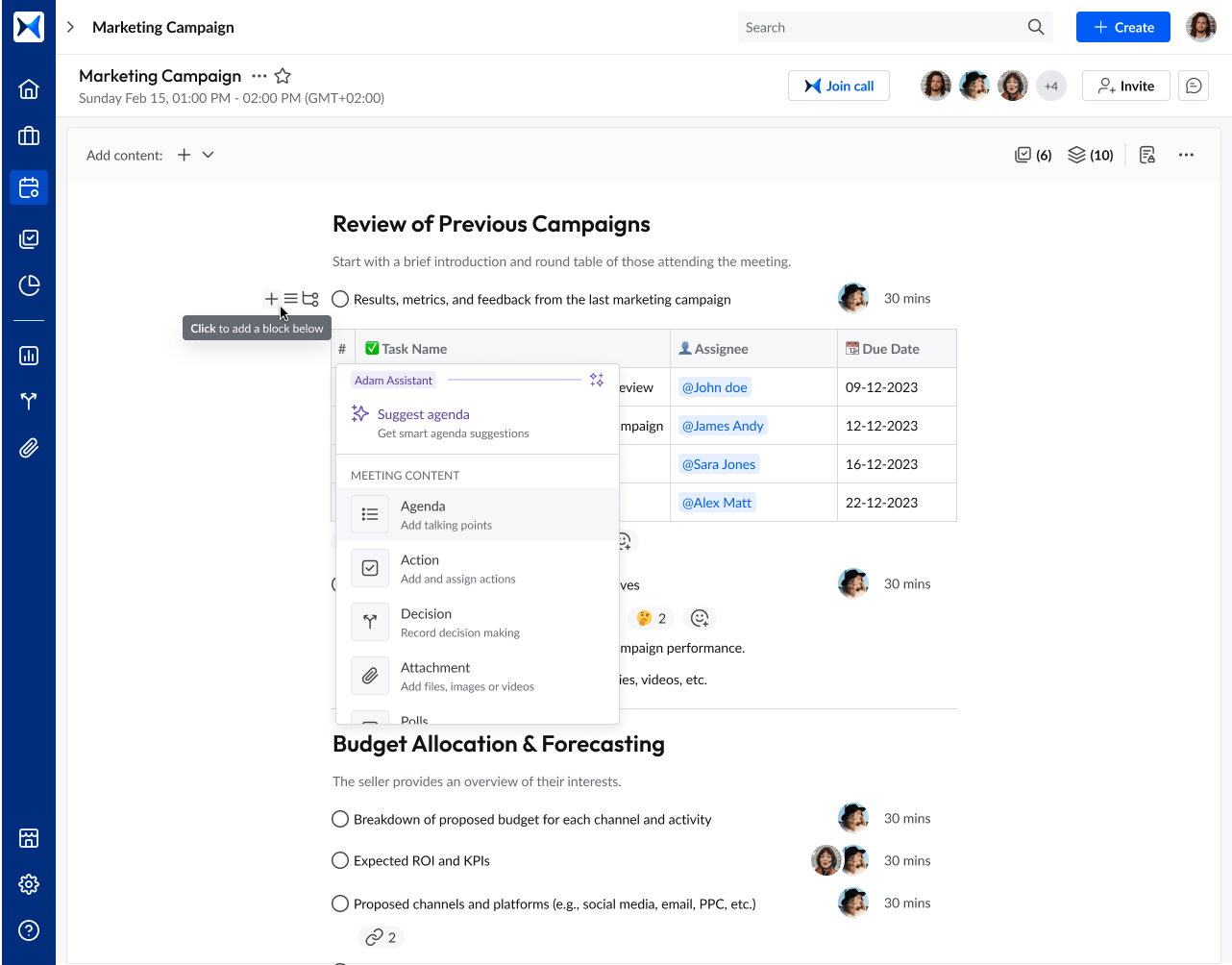
2. Improving meeting efficiency
By enabling real-time collaboration with features like shared agendas, live note-taking, and interactive comment sections, adam.ai keeps meetings focused. This minimizes unnecessary discussions and ensures productive use of participants’ time.
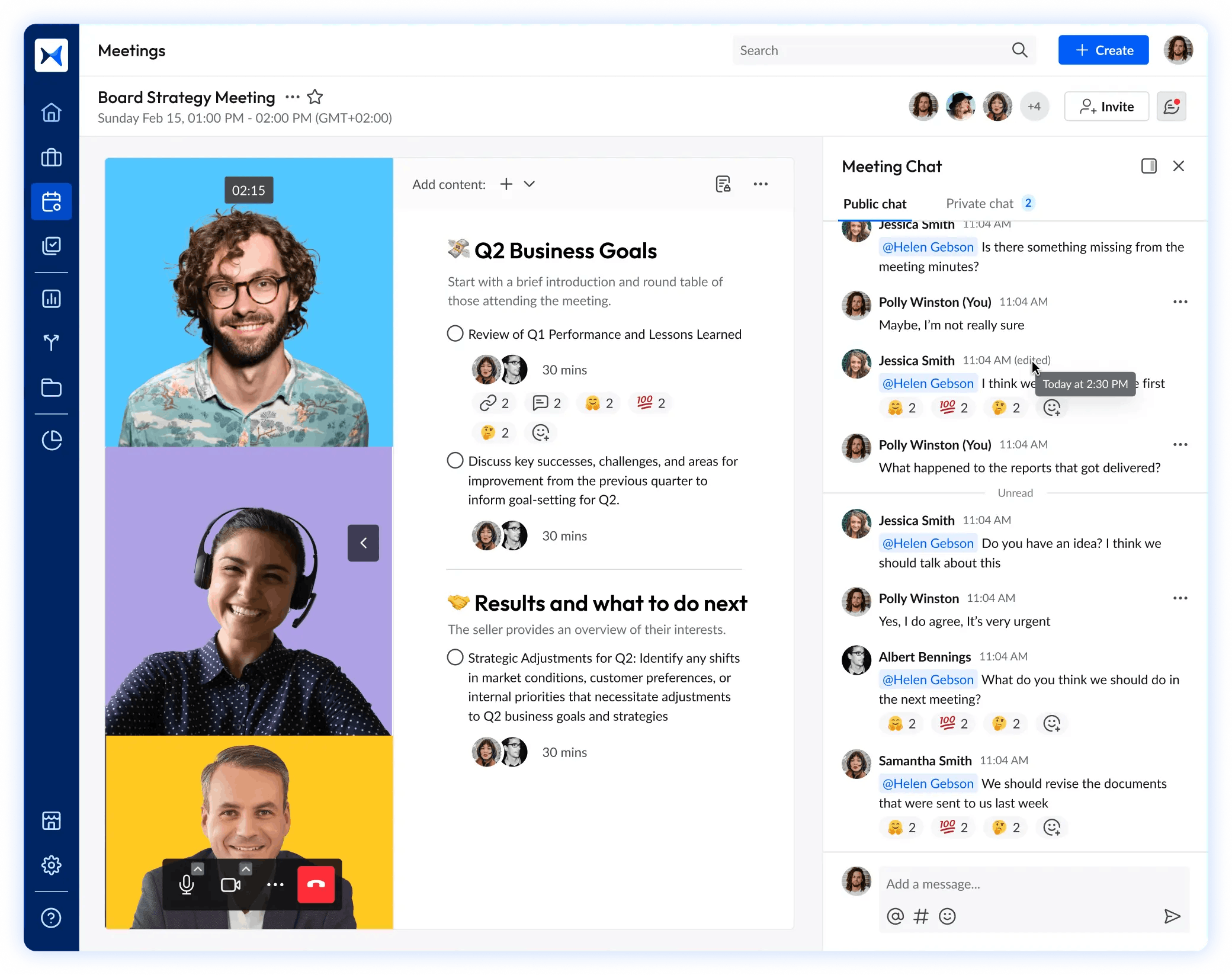
3. Enhancing accountability and follow-ups
adam.ai tracks action items and assigns tasks to specific team members with deadlines, ensuring follow-through. Automated reminders and updates keep everyone aligned, reducing the risk of delays and improving project completion rates.
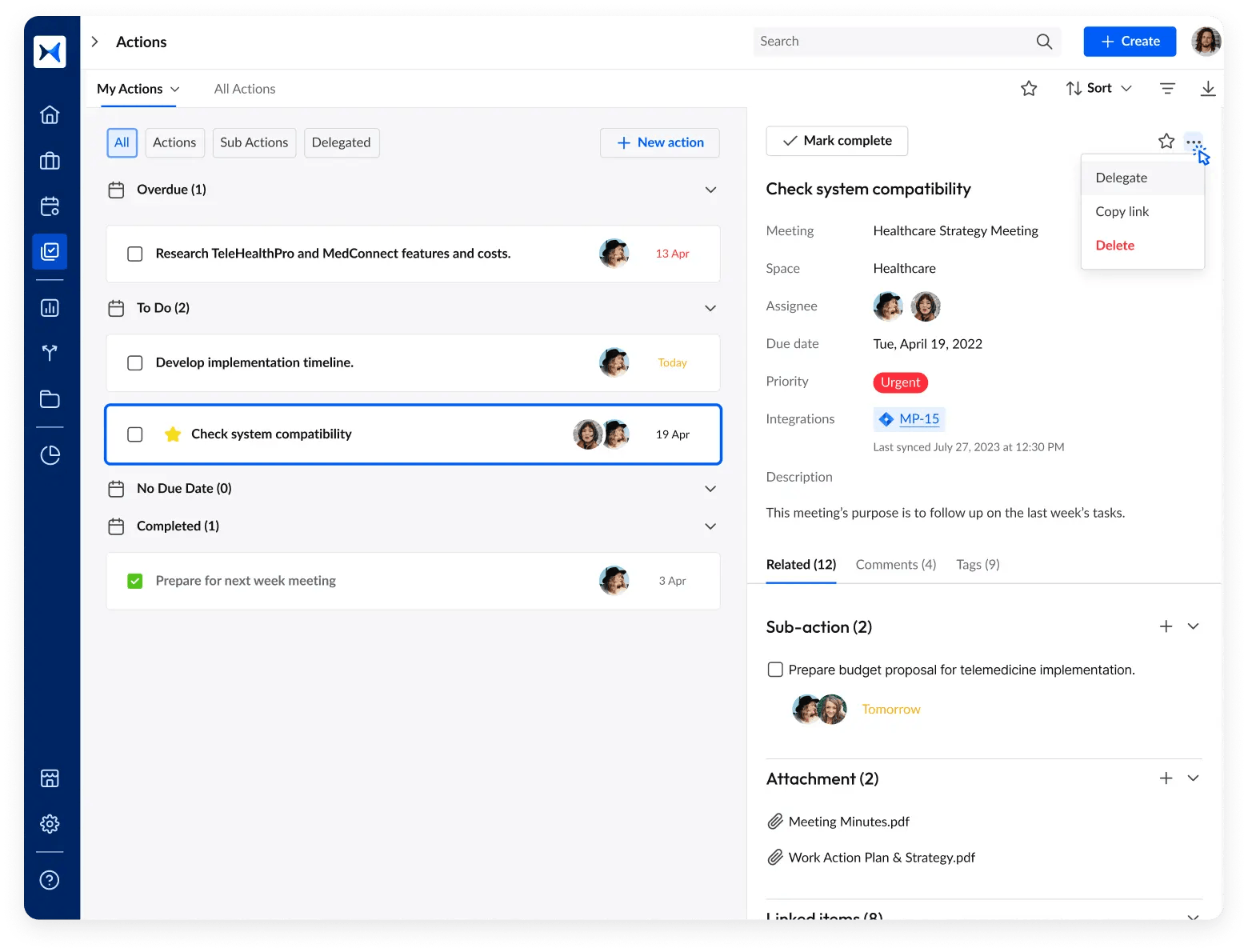
4. Providing data-driven insights
The platform offers analytics on meeting efficiency, participant engagement, and task outcomes. These insights help enterprises identify inefficiencies, refine processes, and measure the direct impact of improved meetings on organizational goals.
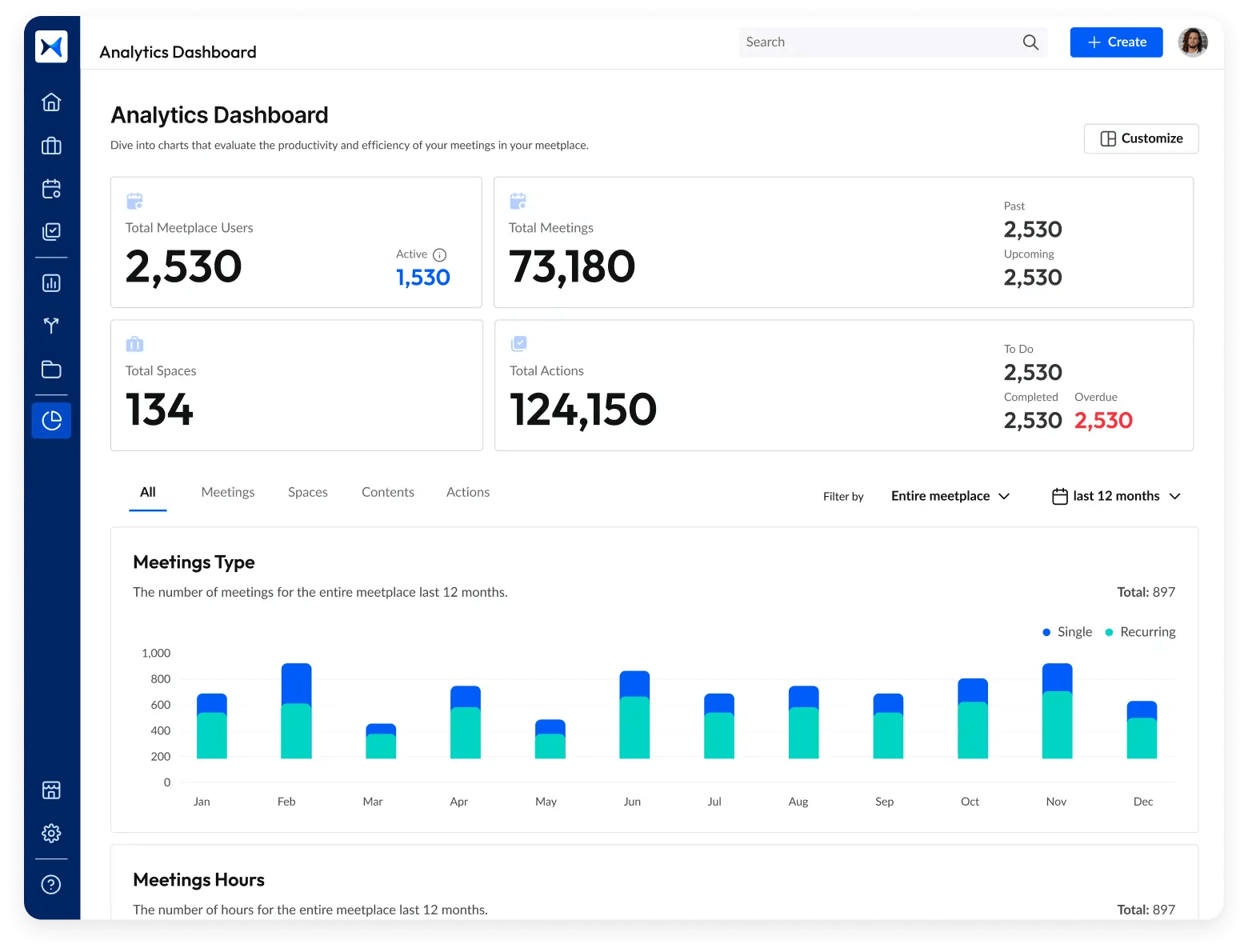
5. Reducing costs and resource usage
By cutting meeting durations and eliminating redundant discussions, adam.ai reduces labor costs associated with prolonged or unnecessary meetings. Additionally, it supports digital documentation, saving costs on printing and distribution.

6. Managing multiple spaces
adam.ai’s multi-space management allows teams to organize projects, departments, and meetings in distinct spaces within a unified platform. This improves collaboration, reduces tool dependency, and enhances scalability for enterprises with diverse operations.
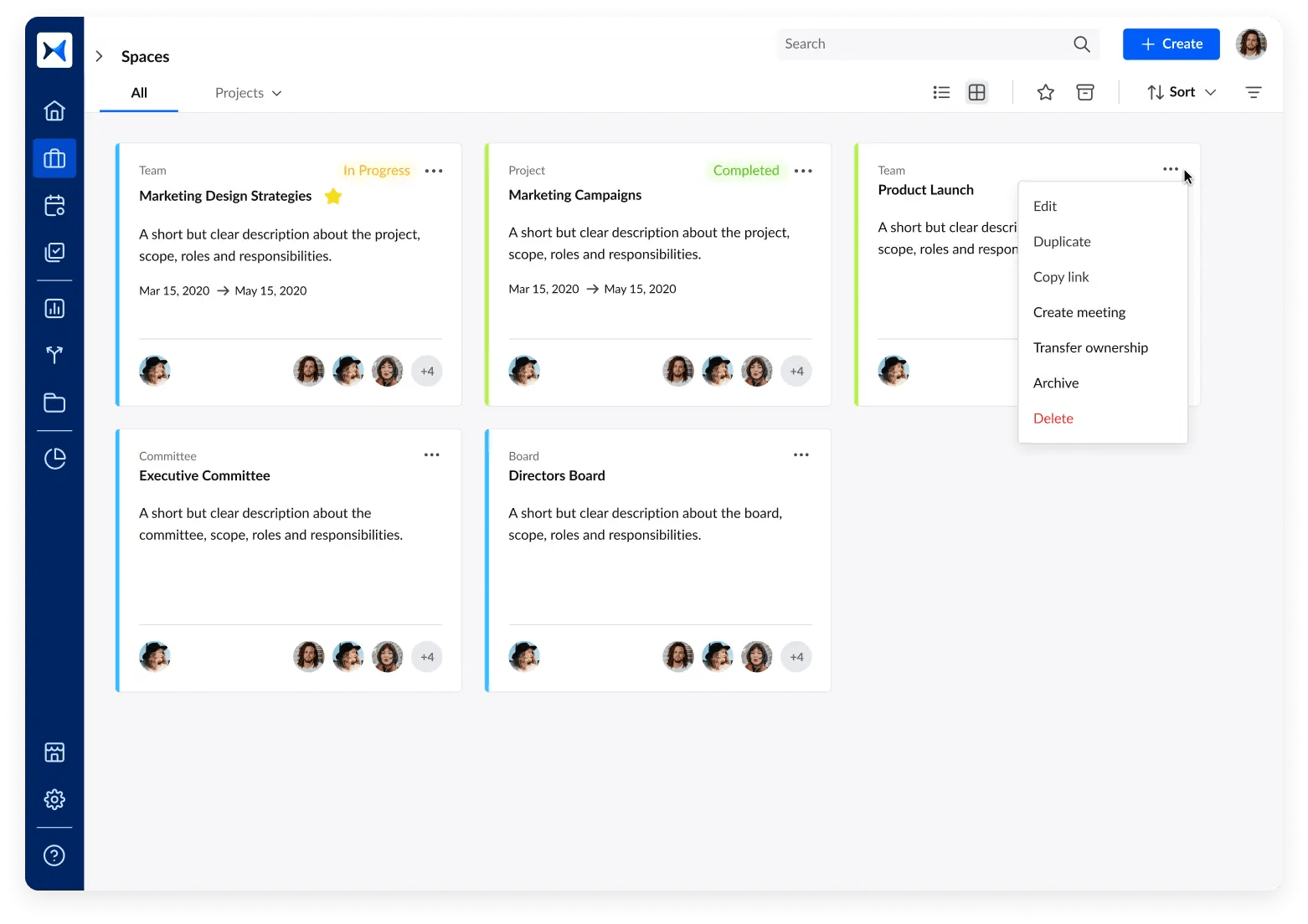
7. Generating meeting minutes
adam.ai automates the creation of structured meeting minutes, documenting key decisions, action items, and discussions. These minutes are securely stored and easily accessible, ensuring accountability, knowledge retention, and compliance with regulatory requirements.
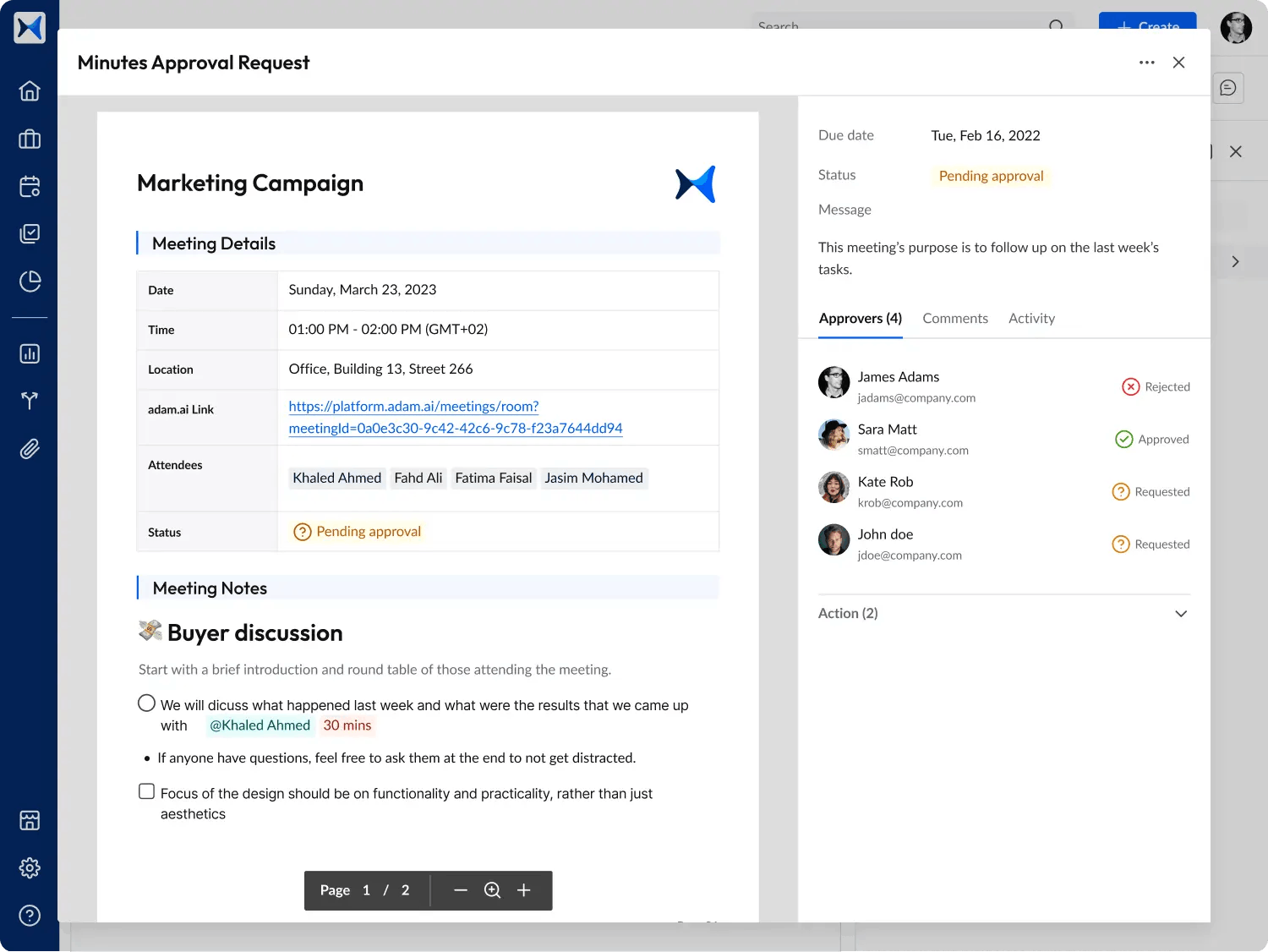
8. Scalability for enterprise needs
adam.ai is designed to adapt to the needs of various sectors, from education to government, offering tools that support governance, compliance, and cross-departmental collaboration at scale.
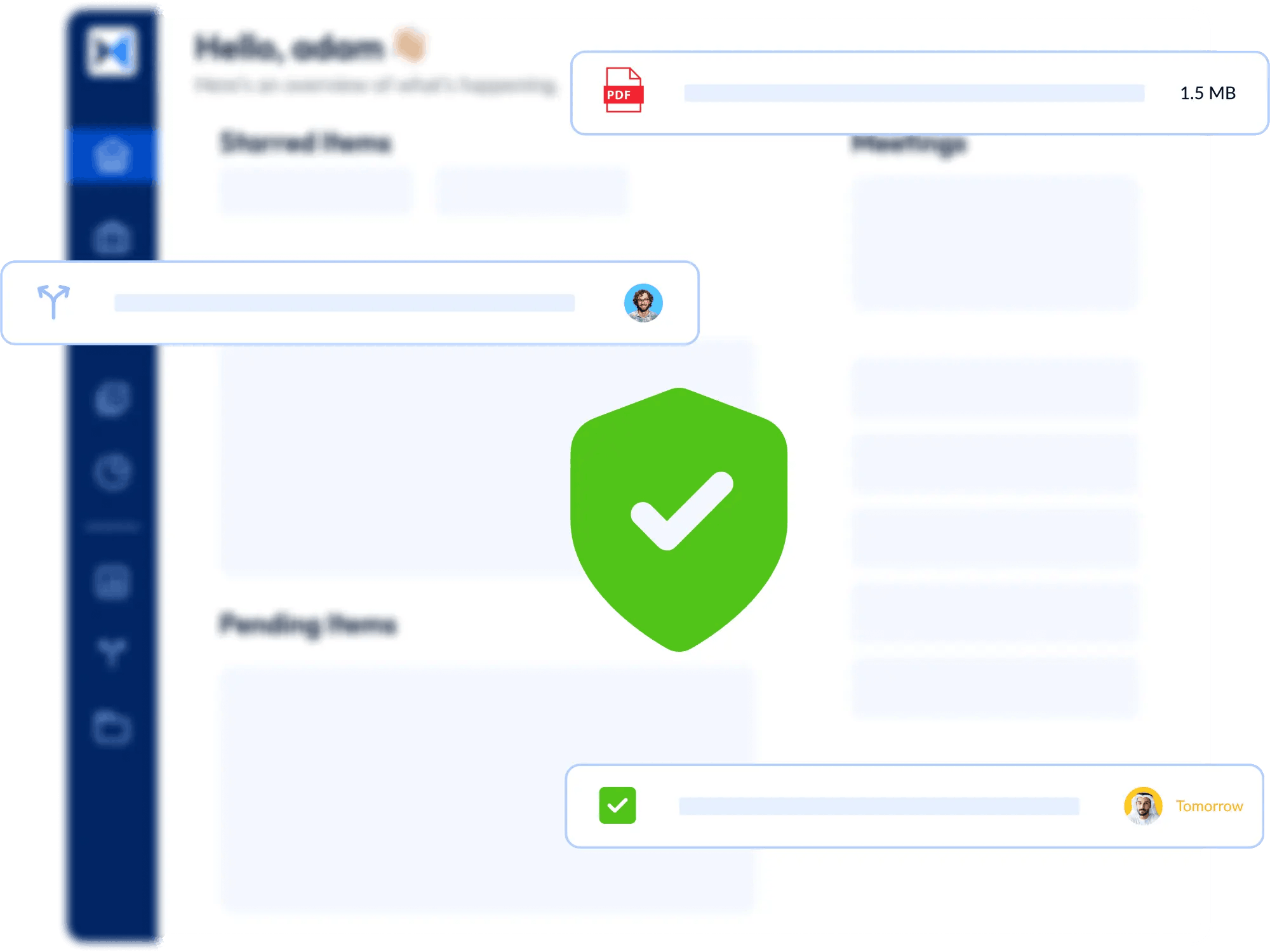
Transform how you conduct critical meetings—From meticulous preparation to effective execution and insightful follow-up, adam.ai integrates comprehensive analytics, full customization, and intuitive interfaces with powerful meeting management tools.
Easy onboarding. Enterprise-grade security. 24/7 dedicated support.
The bottom line
Reducing meeting time with AI-powered agendas isn’t just about saving time; it’s about leveraging modern solutions to align meeting efficiency with your enterprise’s goals. These technologies not only cut costs and boost productivity but also ensure measurable ROI and long-term success.
And while there may be multiple solutions available, here is why adam.ai is the meeting management software platform you can trust:
- adam.ai is one of Atlassian Ventures' portfolio companies.
- In the meeting management software category on G2, adam.ai has been ranked a leader and a high performer for successive quarters in the past years.
- adam.ai has been included in the Forrester Report in the AI-enabled meeting technology landscape.
- adam.ai is trusted and used by powerful teams and organizations worldwide for all types of critical meetings, like board, committee, project management, and business development meetings.
- And most importantly, adam.ai integrates with your existing workflow, is SOC2 compliant, provides dedicated support and success, and has a free trial option.
Subscribe to adam.ai blog
Stay ahead with the latest insights—get our newest blog posts, tips, and updates sent straight to your inbox.